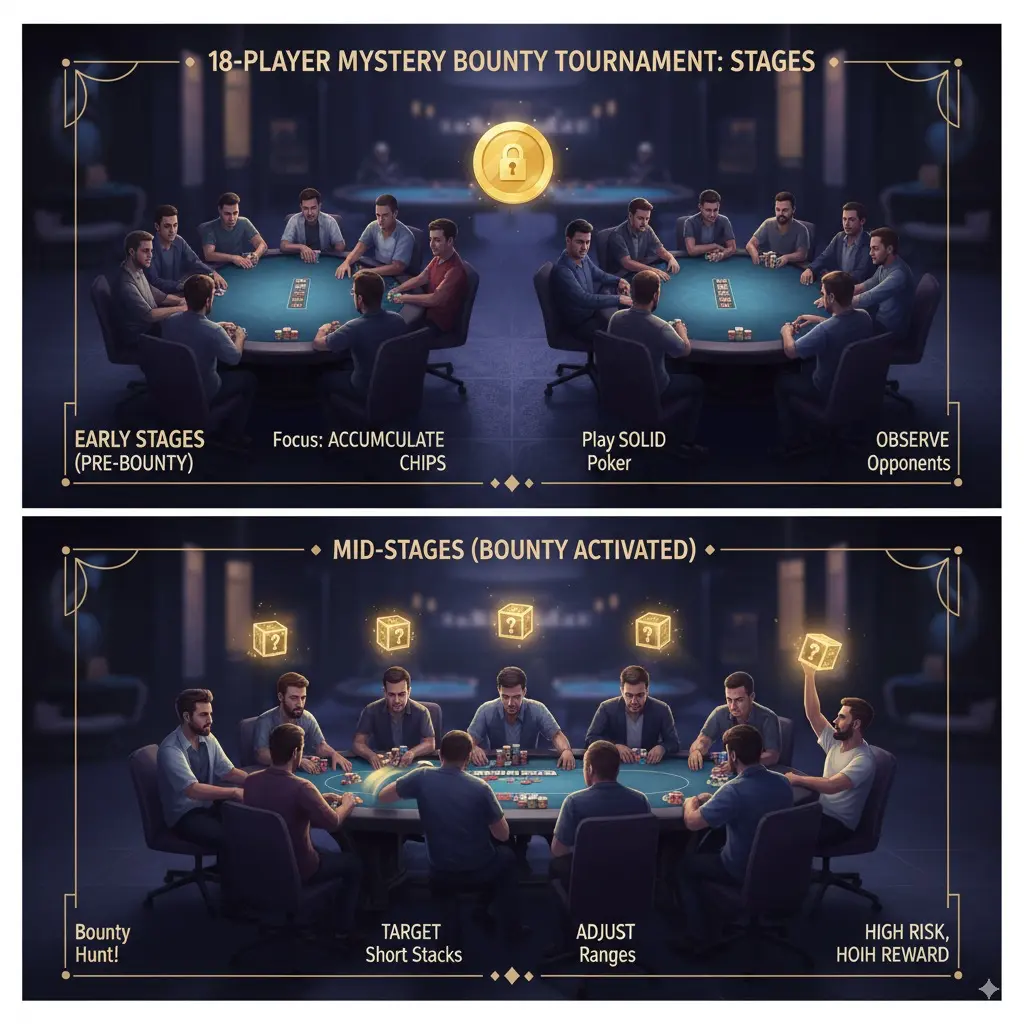My Take on 18-Player Mystery Bounty Tournaments
I've been loving these small 18-player mystery bounty tournaments lately. They're a perfect mix of strategy and surprise — you're not just playing for chips, you're also hunting for those juicy bounties. The dynamic totally changes from the first stage to the final table, and I've been experimenting with how to play them. Here's how I approach these games (as a fellow hobbyist, not a pro):

Early Stage: Building Chips Without Going Broke
The first half — 18 down to 9 — plays a lot like a normal sit & go. Blinds are small, stacks are deep, and nobody's got a bounty yet. Stay patient. I still play my good hands, avoid marginal all-ins, and try to build a solid stack for the bounty hunt later. Scout your opponents. This is the time to see who's loose, who's tight, and who's going to go after every bounty no matter the cost. Value, value, value. With more chips behind, I make money betting strong hands rather than bluffing. I remind myself: you can't win the tournament in level one, but you can lose it.
The Final Table: Mystery Bounties Begin
When the field drops to 9, things get interesting — every knockout gives a mystery bounty. This is where my strategy changes: Elimination value skyrockets. Even if a bounty could be small, the chance of hitting a big one is a huge incentive. This makes busting people out more profitable than in a normal tournament. Target short stacks (but carefully). If someone's got 8 blinds and I cover them, I'll widen my calling and shoving ranges slightly — the bounty adds extra equity. Still mind your stack. Busting trying to win a bounty is no good if it costs you your chance to reach the top 3 payouts. I try to find a middle ground: chase bounties when the math is good, but don't punt my stack just to play bounty hero.
Playing for the Final 3
Only the last three get an actual payout beyond the bounties, so the pressure ramps up hard: ICM + bounty awareness. Now the decisions are razor thin. Do I call off for a bounty when it might cost me a seat in the money? Sometimes yes, sometimes no — it's all about chip stacks and pay jumps. Big stack = massive leverage. If I'm leading, I hammer on the medium stacks who are just trying to make top 3. Short stack = double or nothing. With no min-cash at 4th place, it's often worth gambling for a double-up rather than blinding out. Heads-up or 3-handed = widen ranges. Hands that were marginal earlier become playable monsters now. This part of the tournament feels like a balancing act between pure bounty hunting and survival for the actual payouts.
My Personal Tips
Aggression is key — but stack-aware. Bounties reward busting people, but the money's still up top. Know your table image. If people think you're chasing bounties, you can sometimes trap them. Don't forget to enjoy the mystery. The random bounty amounts are half the fun.
Final Thoughts
I've found these 18-player mystery bounty tournaments to be some of the most exciting poker you can play as a hobbyist. They force you to constantly shift gears: tight early, bounty-hunting middle, and prize-focused late. If you can build a stack early, use it to go bounty hunting at the final table, and then tighten back up as you approach the top 3, you'll give yourself the best shot at both the prizes and the thrills. And as always — I'm just sharing what's been working for me. Poker's a game of adjustments, and every table plays differently. Try different approaches and see what fits your style. Most of all, have fun and embrace the mystery!